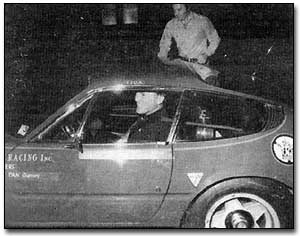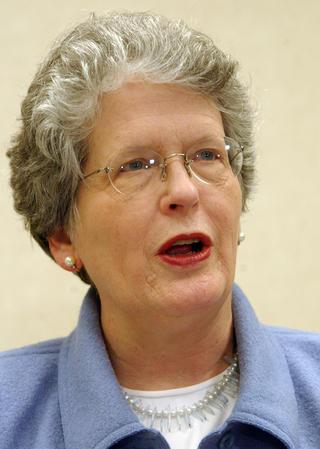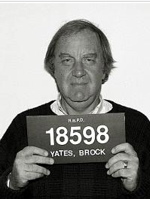Cannonball Runs

(Brock Yates fills up the Ferrari Daytona piloted by racing legend Dan Gurney on the Cannonball Baker Sea-to-Shining-Sea Memorial Trophey Dash, 1975. Photo Car and Driver Magazine.)
If you think I am going to talk about the convention, you would be wrong. I am being resolute in my opposition to encouraging any of the candidates. Perhaps like ravenous bears, they will go away if we do not put our trash out too soon.
I got off on something else that echoes the present without predicting it (history does not repeat itself, though it does rhyme) when a pal wrote me about a scheme to deliver recreational vehicles to Snowbird destinations, saving the owners the inconvenience and expense of driving to their winter roosts, and cheap travel to those willing to drive.
I had to laugh. I am not doing that on a bet, but I remember a thing called the “drive-away service” that used to appear in the want-ads (remember those?).
The point was to link auto owners with low-budget travelers to take cars to distant places for the just cost of the gas. It used to make a lot of sense in the days when we were splitting our time between Ann Arbor and the distant Utah resort town of Park City. We would leap into the car with a cooler and twenty hours later would have left the Motor City behind, and arrived in the snowy uplands of the Great Intermountain West.
We drove fast, and for the most part, accurately.
My favorite story was about the old Brock Yates cross-country race that ran from the Red Ball Garage in Manhattan, NYC, to Redondo Beach just north of LA. The winner was the one who had the fastest elapsed time over the public highways.
It is a measure of how things have changed that such an enterprise these days seems reckless and irresponsible- like the winning time one year by pro-racer Dan Gurney in which he modestly explained that he “at no time had ever exceeded 175mph” in his Ferrari Daytona to post the winning time.
The race itself was an act of guerrilla theater named for the famed distance driver Erwin George “Cannonball” Baker, whose exploits in the pre-interstate America were legendary. In 1933, Baker had driven coast-to-coast in a Graham-Paige Model 57 Blue Streak 8, averaging better than 50 mph for the trip. His record of 53 hours 30 minutes stood unchallenged for nearly forty years.
Hence the inspiration for the “Cannonball Baker Sea-to-Shining-Sea Memorial Trophy Dash” and the Cannonball Run movies with Burt Reynolds that followed.
Growing up in Hot Rod Detroit made us all, by definition, car people, boys and girls alike. Perhaps the testosterone coursing through our veins had something to do with the boys acting out a bit. My first speeding ticket was awarded by the Bloomfield Hills cops to me after piloting Dick Areen’s Charger R/T 440 at 120 in a 50 zone, and I was nothing special, except one of the first in the Class of ’69 to discover the wondrous properties of the police gun.
A larger animosity, only partly amused, existed between car people and activists like Ralph Nader and his acolyte Joan Claybrook. Joan was a particular bur under the saddle of Car and Driver Magazine’s editor Brock Yates, who would have termed Joan the very manifestation of the Nanny State, had the term existed then.

(The Honorable Joan Claybook).
Claybrook later ran amok as the Administrator of the National Highway Traffic Safety Administration under Jimmy Carter. Her advocacy of all sorts of very practical things on the highway was catapulted to prominence during the fuel crisis, and Dick Nixon’s imposition of a national 55mph speed limit.
As we found out later, the double-nickel speed limit contained in Nixon’s National Maximum Speed Law was actually slower than the quickest average speeds of point-to-point travels of Cannonball himself without Interstates.
The enthusiast community was pitted in direct confrontation with the new speed limit, which was viewed across the chasm of the Red State/Blue State divide of the day. I recall attempting to drive 55 the day after Tricky Dick’s speed making the announcement and almost being run down by aggressive Detroit drivers before I gave up and flowed much faster with traffic.
In the interest of fairness, I hasten to remind you that Nixon was a Republican of some kind, with distinct statist tendencies, a tradition carried on by other Republican chiefs.
“Car and Driver” Magazine was a progressive enthusiast rag edited by literary bomb-thrower Brock Yates that went ballistic over the loss of fun with the new speed limit, which was piously supported by the insurance industry, and Ms Claybrook in particular. She wanted ugly bumpers and those pesky seatbelts and lower speed limits to protect us from ourselves.
The Sea-to-Shining-Sea race was conceived in 1971, and gained new life with the fuel crunch in ’73. The run was not a real competitive race with high risks, but intended both as a celebration of the Eisenhower Interstate System and the stricter enforcement of traffic control capabilities at the time.
The first running of the Trophy Dash was held in May of 1971 and the winner was a 1971 Dodge Custom Sportsman van, called the “Moon Trash II.”
The race was run four more times, in November of 1971 and ’72, then a hiatus until 1975, and then a final iteration in April of 1979, the very month I shipped out for Japan. I always wanted to participate, and the accounts of each one of the races was riveting, and none had a casualty of which I am aware. Naturally, advance publicity of a crowd of lunatics hurtling West needed to be avoided, lest Smokey be perched waiting on every highway overpass.

The most remarkable effort was by Yates himself riding with racing legend Dan Gurney. They pulled into Redondo Beach with an elapsed time 35 hours and 54 minutes to travel the 2,863 miles . That is an average speed of approximately 80 mph (130 km/h), while collecting only one ticket along the way. Dan said that snow in the Rockies cramped his style, since the overall record for official Cannonballs will stand (forever) at 32 hours and 51 minutes by Dave Heinz and Dave Yarborough in a Jaguar XJS in the last Cannonball held in 1979.
And so, into the ashbin of history for a great party on wheels, and the grim grayness of the Safety State. There were other, unsanctioned runnings of the legendary Cannonball Run, but that was it for the age of the genuine Merry Roadsters.
I mention that in the context of the drive-away experience: four college students answered an ad to ferry a Caddy Coup de Ville across the country, promising to “not exceed the speed limit” and “drive only during daylight hours.”
They finished second in the race, behind Brock Yates and Dan Gurney, who drove a Ferarri Daytona, and ahead of a van that had been modified with a two-hundred gallon fuel tank to minimize gas stops.
70_deville.jpg
The caption under the delivery Caddy was: “Didn’t burn a drop of oil on the 40-hour trip.”
Don’t accuse me of living in the past. I just can’t drive 55.
Copyright 2012 Vic Socotra
www.vicsocotra.com
